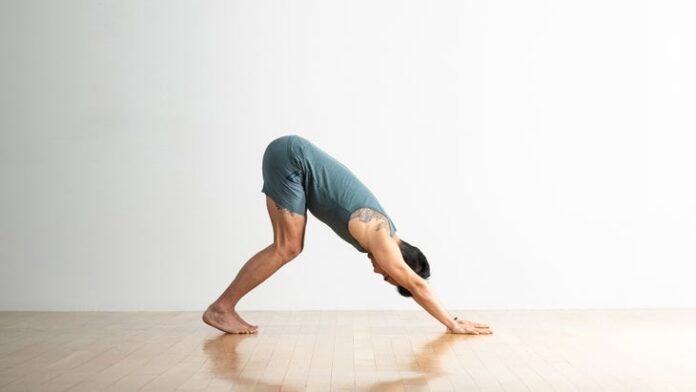“], “filter”: { “nextExceptions”: “img, blockquote, div”, “nextContainsExceptions”: “img, blockquote, a.btn, a.o-button”} }”>
Heading out the door? Read this article on the new Outside+ app available now on iOS devices for members!
>”,”name”:”in-content-cta”,”type”:”link”}}”>Download the app.
Athletes, take note: You already know that the best way to cool down is stretching. But recent science increasingly supports the fact that you can reduce aches and pains by practicing stretches after a workout.
The following stretches after a workout target all of the major muscles, so it works well after a full-body workout. Or you can pick and choose specific stretches for back muscles, leg muscles, and upper body muscles if you’re short on time or you rely on a body part split routine.
Your routine doesn’t need to be particularly long or involved to be effective. Rather, you can feel the difference with just a few simple stretches that target the muscles you just exhausted during your resistance training.
Best Stretches After a Workout
Following are some of the most effective stretches after a workout for anyone who engage in strength training of any sort. Try to stay in each pose for 30 to 45 seconds. Depending on how tight you feel after lifting weights, you can linger in the stretches for longer. Don’t forget to breathe.
1. Downward-Facing Dog
One of the most well-known yoga poses, Down Dog is also one of the best stretches after a workout when you’re strength training because there’s a strong chance it will help lengthen at least one of the muscles you just repeatedly contracted in your weightlifting session. The pose lengthens the entire posterior chain, including your spine and upper back.
It also targets the calf muscles and Achilles tendons, which makes it especially useful following squats. Tightness in these tissues will limit your squat depth and make it difficult to keep your heels firmly grounded when lowering your body into a back squat. Without this stability and mobility, you reduce your range of motion. Without that full range of motion, your muscles will not get the maximum stimulus for hypertrophy and strength gains. Lack of flexibility also increase the risk of losing your balance when you go for depth in the squat.
How to: The key to practicing Downward-Facing Dog is drawing your hips up and back toward the ceiling and reaching your heels down toward the mat. (There’s no need for your heels to touch the mat. But you want to reach for it to lengthen those muscles and connective tissues.)
Think about creating two sides of a triangle with your body: you should have a straight line from your hips down through your back, shoulders, and arms down to your wrists. Plant your palms firmly on the ground with your fingers spread nice and wide. Then, you should mirror this straight line and a similar angle from the hips down through the heels.
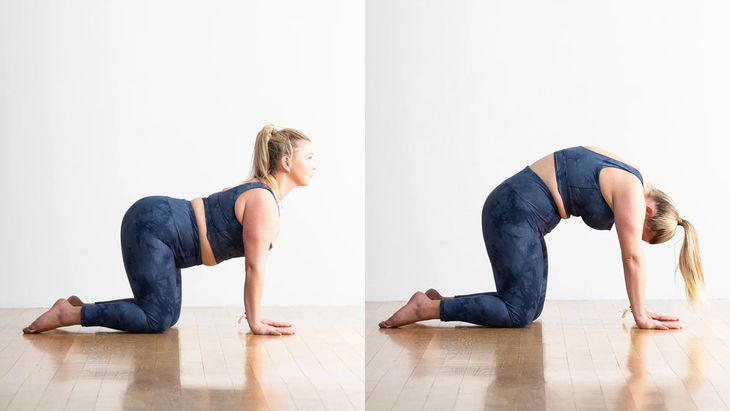
Cat-Cow
Not all yoga poses require you to get into a specific shape and then hold it statically. Cat Cow is a dynamic yoga exercise that flexes and extends the spine to improve mobility of all of the tissues related to the spine. It also promotes hip mobility. Although this is one of the best stretches after strength training, but it can also be performed as part of a dynamic warm-up.
How to: You will also move between an anterior and posterior pelvic tilt in Cat-Cow. Being able to consciously perform a posterior pelvic tilt is critical for any supine weightlifting exercises such as the bench press. You want to be able to engage the lower abdominal muscles to press your low back and back of the pelvis into the bench to prevent straining the back.
One tip I give to my athletes is to connect the movements between the cat posture and the cow posture with your breath. Improving this mind-body connection can help you better activate your core muscles when you are performing other strength training exercises with weights.
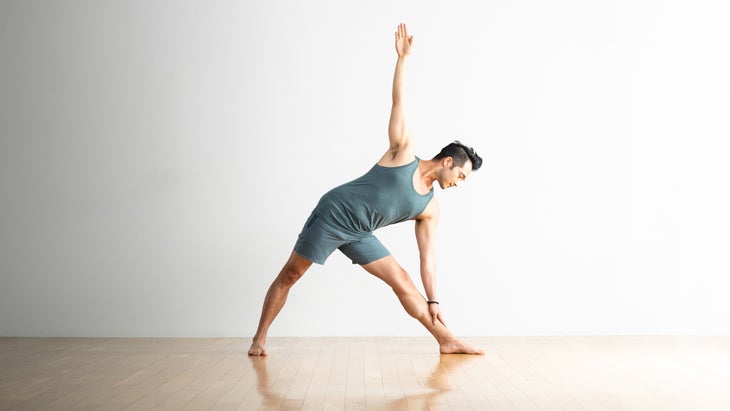
Extended Triangle Pose
Any version of Triangle Pose will help stretch your hips, spine, glutes, hamstrings, and inner and outer thighs. Best of all, this is an excellent yoga pose after chest workouts because it helps open up the pectoral region and shoulder girdle. Use this yoga pose after bench pressing or performing chest fly.
How to: Think about spreading your weight evenly between both feet and grounding them down into the floor in Triangle Pose. If you cannot reach the ground with your front hand that is aiming downward, use a yoga block under that hand.
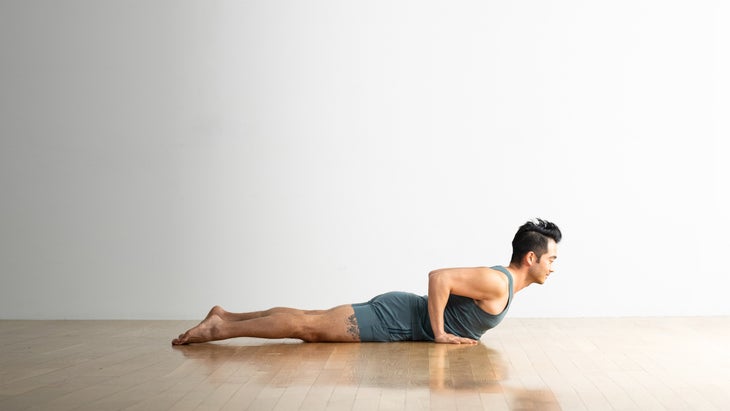
Cobra Pose
This backbend helps stretch the chest, shoulders, and abdominal muscles. Because your arms help support your shape, it doesn’t require a lot of back strength. Also, you get to control how intense you make the stretch.
How to: Try to squeeze your glutes and ground the front of your pelvis into the mat to support proper alignment.

Puppy Pose
Puppy pose is one of the best yoga poses after weightlifting exercises that work the shoulder girdle, arms, and upper back.
How to: Think about lifting your hips up and stacking them directly over your knees. Elongating your spine and opening your armpits. I like to envision myself pressing my armpits into the mat.
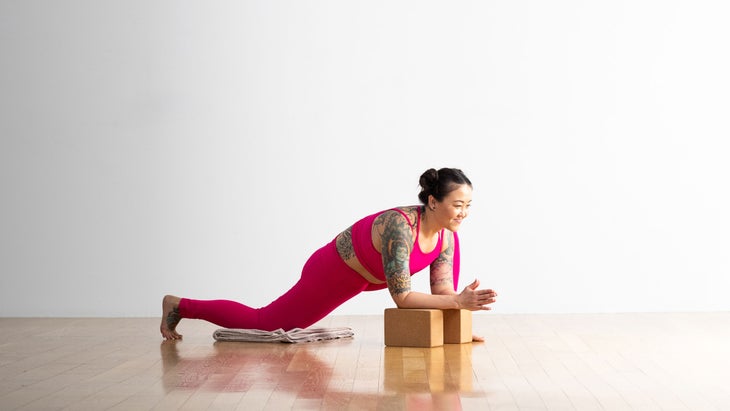
Lizard Pose
Also known as Dragon Pose, this is one of the best yoga poses to stretch the quads and hip flexors. The quads stabilize your knees when you practice squats and lunges and the hip flexors help stabilize the pelvis when you lift the bar while deadlifting. The hip flexors are also essential during hip thrusts, kettlebell swings, and so much more, so it’s important to stretch them after a leg workout.
How to: Lizard Pose has countless different options depending on your desired intensity. You basically start in a low lunge with your back knee on the mat. Bring both hands inside your front foot and stay here or come down onto your forearms. You want to feel a stretch along the front of your back hip and thigh. Don’t worry about bringing your forearms all the way down.
If you practice each stretch one time, the entire post-weightlifting routine takes less than 10 minutes. You can repeat any of the poses where you feel like you need to target the muscles again.


